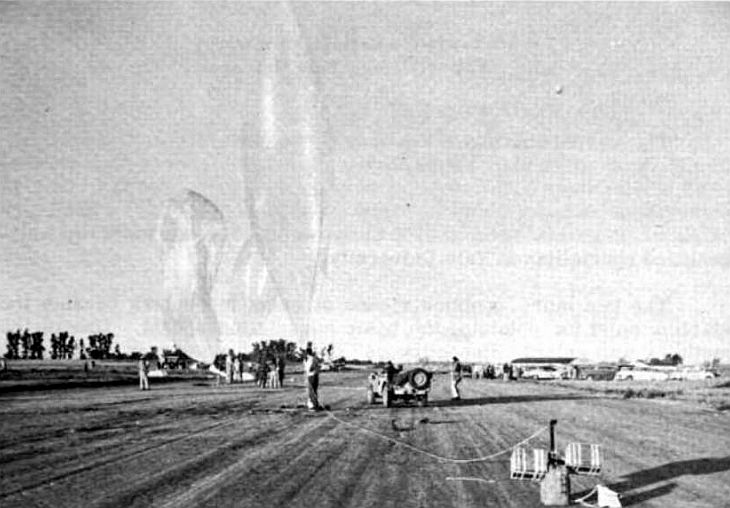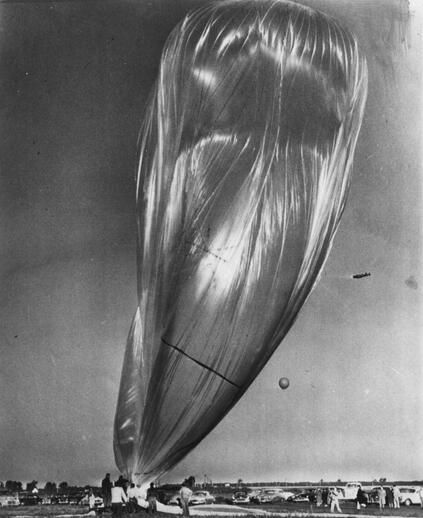Purpose of the flight and payload description
The so-called GIANT SKYHOOK mission was a test flight of a 3.000.000 cubic feet balloon manufactured by General Mills. At the time it was the largest one ever made. The balloon measuring 178 meters in diameter was made of polyethylene plastic 0.001 inch thick and designed to float at an altitude of 120,000 feet
This first test was meant to transport onboard a 250 pound gondola of scientific instrumentation for the Naval Research Laboratory (NRL), and special photographic plates for NRL and private institutions. The main payload was devoted to study cosmic-ray particles.
Details of the balloon flight
Balloon launched on: 9/3/1952 at 6:40 cst
Launch site: University of Minnesota Airport, New Brighton, US
Balloon launched by: General Mills Inc.
Balloon manufacturer/size/composition: Zero Pressure Balloon General Mills - 3.000.000 cuft (178 feet in diameter)
Balloon serial number:
Flight identification number:
End of flight (L for landing time, W for last contact, otherwise termination time): 9/3/1952 at 8:15 cst
Balloon flight duration (F: time at float only, otherwise total flight time in d:days / h:hours or m:minutes - ): 1 h 25 m
Landing site: Near Lake City, Minnesota, US
Payload weight: 250 pds
The balloon was launched at 6:40 CST on September 3, 1952, at the General Mills Flight Facility in the University of Minnesota airport near New Brighton. While the balloon was being inflated, shifting winds caused excessive handling of the fragile material and holes appeared approximately 30 feet from the apex of the balloon. It was decided to launch the balloon in order to observe the feasibility of the experimental launching technique, but the valuable scientific instruments were detached prior to take-off.
Although the perforations in the giant balloon prevented the ascent of the instruments, the launching itself was successful and provided needed experience in handling a plastic balloon approximately four times as large as any previous Skyhook. The balloon managed to reach an estimated altitude of 35,000 feet before it was automatically terminated two hours later and landed in a farm near Lake City in Minnesota.
External references
- Big balloon lands in Lake City farm The Winona Daily News, 1952, Sep 03, Page 1
- The Giant Skyhook: Cosmic-Ray Balloon Fails in Test Physics Today 5, 10, 25 (1952)
- World's largest plastic balloon Naval Research Reviews, October 1952, Page 21
16366If you consider this website interesting or useful, you can help me to keep it up and running with a small donation to cover the operational costs. Just the equivalent of the price of a cup of coffee helps a lot.



